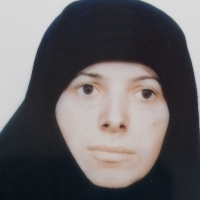Assessment and evaluation of the physical dimensions of urban resilienceagainst earthquakes (Case study: District 7 of Tehran)
The present study is applied in terms of purpose and in terms of descriptive-analyticalmethod. First, using library studies such as the study of texts related to the subject andprevious research and using the opinions of experts in this field, effective criteria fordetermining the physical dimensions of the city against earthquakes and finally usingFANP and TOPSIS model to analyze data will be. For this purpose, after reviewing therelevant theoretical and experimental texts and formulating the theoretical frameworkof the research, the explanatory indicators of the subject under study have beenidentified and selected. First, factor analysis was performed with selected indicators.First, factor analysis was performed with selected indicators. The selected indicatorswere then placed in a network structure; and finally, the weight of each of the criteria and indicators was determined using the ANP method. SUPER DECISION softwarehas been used to do this. Finally, the data is analyzed using the TOPSIS model. Theresults of factor analysis showed that five factors were identified as the finaldeterminant of physical resilience in the study area, so that the first factor with 24.573% had the greatest effect on physical resilience in region 7. The results showedthat this factor, along with the second factor, explains about 42% of the physicaldimensions of resilience in the region.By placing the factor load obtained from thefactor analysis in the ANP model, the significance coefficient of the index wasobtained. The results of the ANP model showed that the two indicators of access topassages with suitable width and access to green space with a coefficient of 0.110 have the greatest effect on the physical reflection of Tehran's 7th district. Finally, using theTOPSIS model, the neighborhoods were ranked The results of TOPSIS model showthat there is a big difference in terms of physical resilience between neighborhoods in the study area, so that Bahar neighborhood with 0.568, Niloufar with 0.576 andAbbasabad with 0.498 have the highest physical resilience. On the opposite side ofNezamabad neighborhoods with 0.340, Shargh 0.341 and Khajeh Nezam Al-Molkwith 0.346 have the lowest level of physical resilience in region 7.
- حق عضویت دریافتی صرف حمایت از نشریات عضو و نگهداری، تکمیل و توسعه مگیران میشود.
- پرداخت حق اشتراک و دانلود مقالات اجازه بازنشر آن در سایر رسانههای چاپی و دیجیتال را به کاربر نمیدهد.



